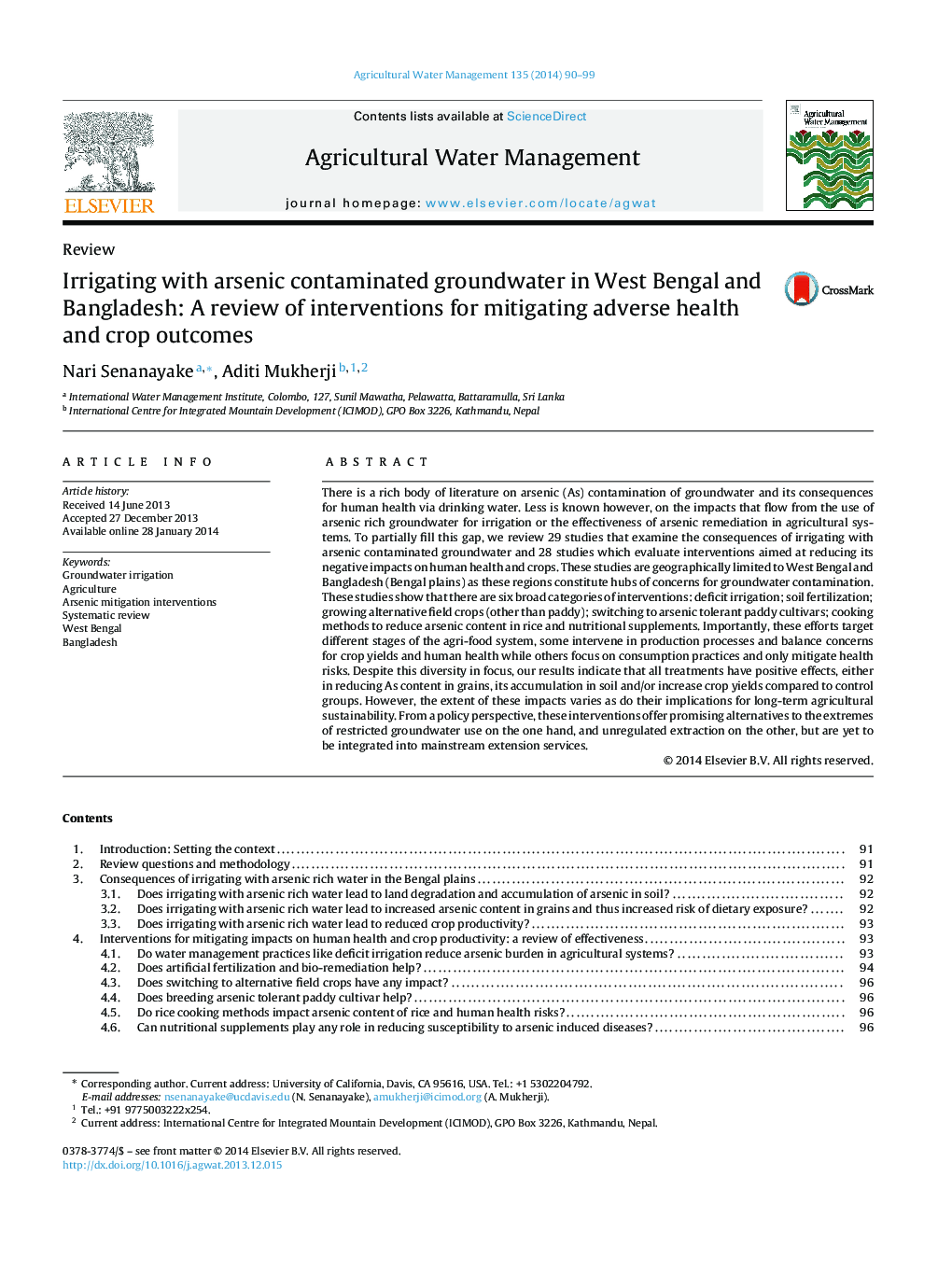| کد مقاله | کد نشریه | سال انتشار | مقاله انگلیسی | نسخه تمام متن |
|---|---|---|---|---|
| 4478736 | 1622944 | 2014 | 10 صفحه PDF | دانلود رایگان |
• We review the impact of arsenic (As) rich groundwater on crop yields and uptake of As by soil and crop.
• We review the impact of various interventions aimed at managing negative impacts of arsenic.
• We find that there are at least 6 major types of interventions that have been tried.
• They are all successful in reducing negative impacts of irrigating with As rich groundwater however, the extent of these impacts varies as do their implications for long-term agricultural sustainability.
There is a rich body of literature on arsenic (As) contamination of groundwater and its consequences for human health via drinking water. Less is known however, on the impacts that flow from the use of arsenic rich groundwater for irrigation or the effectiveness of arsenic remediation in agricultural systems. To partially fill this gap, we review 29 studies that examine the consequences of irrigating with arsenic contaminated groundwater and 28 studies which evaluate interventions aimed at reducing its negative impacts on human health and crops. These studies are geographically limited to West Bengal and Bangladesh (Bengal plains) as these regions constitute hubs of concerns for groundwater contamination. These studies show that there are six broad categories of interventions: deficit irrigation; soil fertilization; growing alternative field crops (other than paddy); switching to arsenic tolerant paddy cultivars; cooking methods to reduce arsenic content in rice and nutritional supplements. Importantly, these efforts target different stages of the agri-food system, some intervene in production processes and balance concerns for crop yields and human health while others focus on consumption practices and only mitigate health risks. Despite this diversity in focus, our results indicate that all treatments have positive effects, either in reducing As content in grains, its accumulation in soil and/or increase crop yields compared to control groups. However, the extent of these impacts varies as do their implications for long-term agricultural sustainability. From a policy perspective, these interventions offer promising alternatives to the extremes of restricted groundwater use on the one hand, and unregulated extraction on the other, but are yet to be integrated into mainstream extension services.
Journal: Agricultural Water Management - Volume 135, 31 March 2014, Pages 90–99
